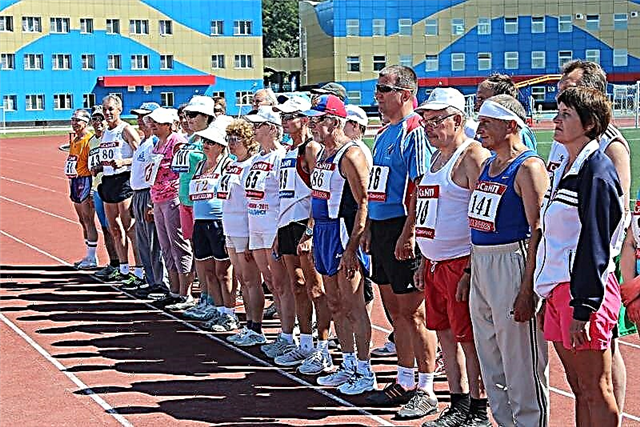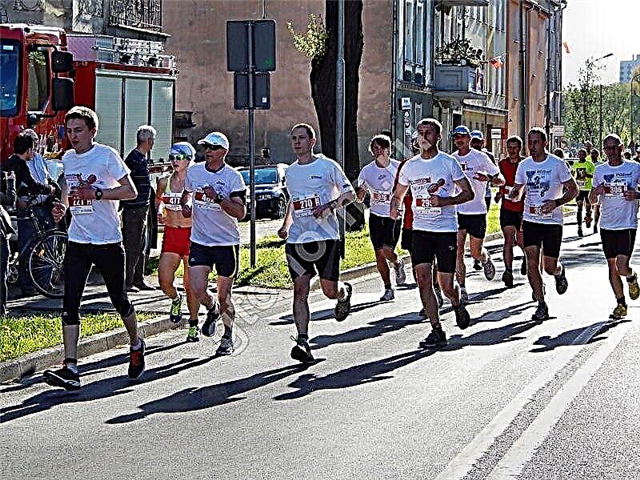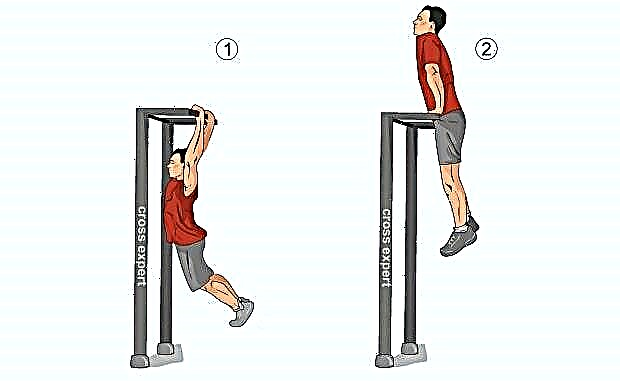Intervertebral hernia is a violation of the normal functioning of one or more elements of the vertebral body, which occurs as a result of their inflammation and deformation, up to rupture of the annulus fibrosus, extrusion and sequestration of the nucleus pulposus. This degenerative disease most often occurs in the most stressed area of the spine - the lumbosacral. Moreover, more than 90% of cases occur in the two lower lumbar vertebrae and the junction with the sacrum.
Timely diagnosis and treatment allows you to restore health and avoid serious consequences. Only with an advanced form of the disease or especially severe cases, surgery may be required.
The reasons
In a healthy person who leads an active lifestyle and maintains muscles and the musculoskeletal system, a hernia of the spine can occur only as a result of a serious infectious disease or injury. Congenital or acquired pathological changes in bone tissue increase the risk of developing this disease. It is also facilitated by a sedentary lifestyle and overweight, which leads to a decrease in blood flow, a weakening of the muscular corset and an increase in the load on the spinal column.
An unbalanced diet, which causes a lack of vitamins and microelements and a violation of the normal course of biochemical processes, is another factor in reducing the functional health of the musculoskeletal system.
Prolonged stay in an uncomfortable position at the workplace or during sleep often causes the curvature of the spine, and later - herniated disc.
The disease can be provoked by uncontrolled physical activity when lifting weights or improper performance of strength exercises.
Pregnant women are at risk, especially in the last months, due to a significant increase in total body weight and increased pressure on the intervertebral discs. The aging processes of the body negatively affect the condition of bones, connective and muscle tissues, therefore, with age, the number of such diseases increases significantly. Genetic predisposition also matters. For example, scoliosis is often inherited.
Symptoms
Depending on the area of the lesion, the signs of the disease have their own characteristics.
- The lumbosacral zone is characterized by the appearance of "aching" pain in the region of a specific spinal disc, which increases under load to acute. Pain sensations can occur in the gluteal muscles and the back of the thigh and lower leg. Weakness appears in the legs and the sensitivity of their individual areas worsens, the work of the urogenital organs becomes difficult.
- Problems in the cervical spine are manifested by pain in the arm or shoulder area, numbness in the fingers, frequent dizziness, increased blood pressure and, as a result, headaches.
- Regular pain in the chest area can be a symptom of pathological changes in this area of the spine.

Image of a herniated disc. © Alexandr Mitiuc - stock.adobe.com
Who heals
Symptoms of herniated discs are similar to those of the initial manifestations of many other functional disorders and pathologies. Initially, the therapist clarifies the diagnosis and refers to the appropriate narrow specialist.
Which doctor will treat a hernia of the spine depends on the severity of the symptoms of the disease and the degree of damage to the intervertebral discs.
As a rule, a neurologist conducts a more accurate diagnosis and prescribing a treatment method. His task is to determine the severity and stage of the disease, as well as the reasons for its occurrence. Depending on the results, he either begins to treat the patient himself (in relatively simple cases of a neurological nature), or refers him to another specialist, when an in-depth examination of complex pathological changes and a more accurate effect on lesions are required.
Recently, a new specialization of medical workers has appeared - a vertebrologist. It has a narrow focus - it is the diagnosis, treatment and prevention of diseases of the spine and joints. Basically, to solve problems, manual therapy and other methods of influencing the affected area are used, which take into account the complex effect of each vertebra on the human body.
Patients who require non-operative treatment and restoration of the functions of the musculoskeletal system lost as a result of the disease are referred to an orthopedist. He uses both drug methods and various methods of restorative medicine: physiotherapy exercises (exercise therapy), various types of massage and physiotherapy.
Manual therapy, which is not recognized by official medicine, with proper use, effectively relieves pain syndromes and restores the working capacity of the spine.
Physiotherapy procedures are prescribed to relieve inflammation and muscle hypertonia in the affected area. For this, various methods of thermal, electrical and hydrodynamic effects are used.
The services of a neurosurgeon are resorted to in the most extreme cases, when all methods have not brought positive results and a sequestered hernia or exacerbation occurs, which can lead to serious consequences. Spinal injuries also often require surgery.
How to relieve pain
Many pain relievers and anti-inflammatory drugs are available commercially, which come in the form of tablets, ointments, creams, and drops. They relieve pain to one degree or another and help to reduce the inflammatory process.
They must be used in accordance with the attached instructions and with care so that side effects do not harm the digestive tract or other weakened organs.
Self-treatment cannot be carried out for more than two days. If symptoms persist, see a doctor.
Non-surgical treatment methods
The main task of such treatment is to relieve pain and restore the normal state of the affected part of the spine.
Drug treatment
The main remedies in this method are anti-inflammatory and antispasmodic drugs that eliminate pain and muscle spasms. They are used externally - in the form of ointments and orally - in the form of tablets or intramuscular injections are prescribed.
To improve the connective tissue, special chondroprotectors are used. Additionally, multivitamin complexes are prescribed to enhance the regenerative functions of the body.
Blockade
With an insufficient effect from the use of anesthetic drugs, local administration of the drug (blockade) is used directly into the affected area, where the nerve endings are clamped. It is determined using an x-ray machine and the procedure is carried out under his supervision using local anesthesia.
Manual therapy
This method of treatment gives good results in the initial stages of the disease, but does not eliminate degenerative changes in the intervertebral discs and other pathologies.

© glisic_albina - stock.adobe.com
In this case, the pinched nerve is released by relaxing the muscles and returning the vertebrae and ribs to their original place. Such procedures must be performed only by qualified specialists with a license to carry out this type of activity and in the direction of the attending physician.
Folk remedies
There are a huge number of different wellness recipes and methods. But it is worth using only repeatedly tested and reliable ones.
- Compresses based on honey with various natural fillers have a good analgesic effect.
- It helps to relieve hypertonicity by rubbing fir oil into the affected area and then applying woolen cloth to it.
- The use of hirudotherapy thins the blood, improves its microcirculation, which helps to accelerate the recovery processes.
- Such an ancient method as acupuncture also relieves pain and muscle spasms well.

© 2707195204 - stock.adobe.com
Surgery
In case of unsatisfactory results of the above methods of treatment and the progression of the disease, which threatens with paralysis or dysfunction of the spinal cord or other organs, one of the methods of surgical intervention is prescribed.
Discectomy
This is an abdominal surgery performed under general anesthesia. Almost always (95% of cases) with this method, the entire intervertebral disc is removed, since its partial removal does not guarantee against recurrence of an intervertebral hernia. Despite the good effectiveness (more than 50%) and the relative ease of implementation, this method has disadvantages - it is a long recovery period (from one to two months) and the risk of scarring and adhesions.
Endoscopic surgery
For this procedure, local anesthesia is used and a special tube is used, which is inserted through a small incision between the vertebrae. A camera and an instrument are lowered into this tube to remove the hernia. The whole process of endoscopic surgery is monitored using the image on the monitor, which is transmitted by the camera. This method is highly effective (more than 80%), causes minimal damage to the patient's tissues and does not require hospitalization after the operation.
Microsurgical laser surgery
This method is used to reduce the size of the nucleus pulposus and thereby restore the position of the vertebra. The operation is performed under local anesthesia and is monitored using an X-ray machine. A special needle with a light guide inside is inserted into the nucleus pulposus, through which light pulses of a certain spectrum and intensity are transmitted from the laser. As a result, a part of the liquid heats up and evaporates (the steam is removed by a special gas outlet), which leads to a decrease in the volume of the nucleus, a decrease in pressure inside the intervertebral disc and its return to its original place.
This is an effective, least traumatic and painless method of treatment. Due to the age-related decrease in the amount of fluid in the discs, there is a restriction on the operation by age (up to 45 years).
Physical activity with a hernia
To prevent exacerbation or recurrence of an intervertebral hernia, it is necessary to minimize the load on the spine and avoid sudden twisting movements or bending. Always choose a comfortable position when performing any long-term work, rationally distribute weight when moving heavy loads.
Yoga
Yoga classes have a beneficial effect on the entire musculoskeletal system - the mobility of the joints improves, the muscles stretch and their strength and elasticity increase, and the muscle corset is strengthened. This helps to restore the supporting functions of the spine and reduces the risk of its diseases.
Before starting exercise, you should consult your doctor.

Yoga. © madeinitaly4k - stock.adobe.com
Training on simulators
To obtain a positive result from such loads, first of all, it is required to choose the necessary simulators and the correct training system, taking into account the state of health and the recommendations of the attending physician. In this, in addition to a medical worker, a trainer can also help. In general, it is better to give up power loads until the end of the rehabilitation course, cardio exercises can be performed, i.e. exercise on an exercise bike, treadmill, etc.
Sport
Depending on the severity of the intervertebral hernia, it imposes restrictions even on amateur sports. For professionals, this is often the end of a sports career. In any case, when choosing a sport, it should be remembered that training that requires a relapse of the disease can provoke:
- Prolonged static or single heavy loads on the spine.
- Sudden jerking movements with bends and bends.
- Shock loads (various types of jumps).
Swimming strengthens the back well.
Gymnastics
There are many systems of gymnastics classes for the rehabilitation and restoration of the working capacity of muscles and joints. For some, whole complexes of special simulators have been created (the system of Dikul and Dr. Bubnovsky). This allows you to work out in detail individual muscle groups, unload and stretch various areas of the spinal column. In each specific case, an individual program is selected.
For people with a problematic spine, it is imperative to do daily exercises to maintain muscle tone and maintain the flexibility of the spine.
Rehabilitation
The period and methods of rehabilitation depend on the methods of treatment and the patient's condition at the time of its completion. Recommendations on the timing of the limitation of loads, the necessary recovery procedures and complexes of physical exercises are developed by the attending physician.
Spinal traction
A person spends most of the time in an upright position and the spinal column experiences constant pressure on the intervertebral discs, which reduces the distance between the vertebrae and can lead to their displacement. Therefore, even for a healthy body, it is important to periodically perform stretching exercises.

© DedMityay - stock.adobe.com
There are different methods of stretching the spine for the treatment of herniated discs: a variety of weight machines or elastic bands, special devices for exercising in water, and traction cots. After such procedures, it is necessary to use a corset for some time and perform a set of exercises that strengthens the muscles of the back every day.
Corset
In the postoperative period and during recovery from injuries, there is a danger of displacement of the intervertebral discs. To prevent this, special devices (corsets) are used, which reduce the load on the spine, fix the vertical position of the body and limit rotational movements and inclinations of the body.

© EVGENIY - stock.adobe.com
With the normalization of the spine, it is necessary to gradually abandon the use of support devices in order to avoid complete dependence on them as a result of muscle atrophy.
Effects
In oriental medicine, it is no coincidence that the term "mister spine" is often used. Because all human organs and systems function under the control of the peripheral nervous system, of which it is the center. The health of every cell of the body completely depends on its normal functioning.
Delayed or poor-quality treatment of intervertebral hernia can lead to diseases of almost any organ and disruption of the functioning of vital systems.
Pinching of nerve endings, in addition to obvious manifestations in the form of neurological pain sensations, has a depressing effect on the cardiovascular system and the gastrointestinal tract. There is an imbalance in the course of biochemical processes, and inflammation can occur in a variety of organs (pancreas, liver, bronchi).If you do not take measures to eliminate the pinching, this can lead to paralysis of the limbs, the development of severe chronic diseases, disability and even death.
Food
Being overweight can cause a hernia of the spine. Therefore, its normalization is an important part of ensuring the health of the body. This is especially important for people who already have such a pathology. A balanced diet combined with an active lifestyle will remove body fat and reduce body weight.
It is necessary to adjust the diet - eat more protein foods, limit salt intake, drink more water and ensure that the body is saturated with vitamins and trace elements. Then the treatment and restoration of the spine will be faster and the risk of relapse will decrease.
Prevention
An active lifestyle and a healthy diet are the basis for preventing the occurrence of spinal pathologies. In addition, it is necessary to maintain a good physical shape of the body and strengthen the muscle corset with daily exercises.
Lifting weights and heavy physical work should be performed only in a comfortable position that eliminates excessive loads, provides stability, maintains balance and evenly distributes the weight of the load being lifted to all muscle groups.
Due attention should be paid to posture while walking and sitting: the back should always be straight, the shoulders - unfolded. When doing seated work, the size and location of the equipment (chair, table, computer, local lighting) must meet ergonomic requirements.









